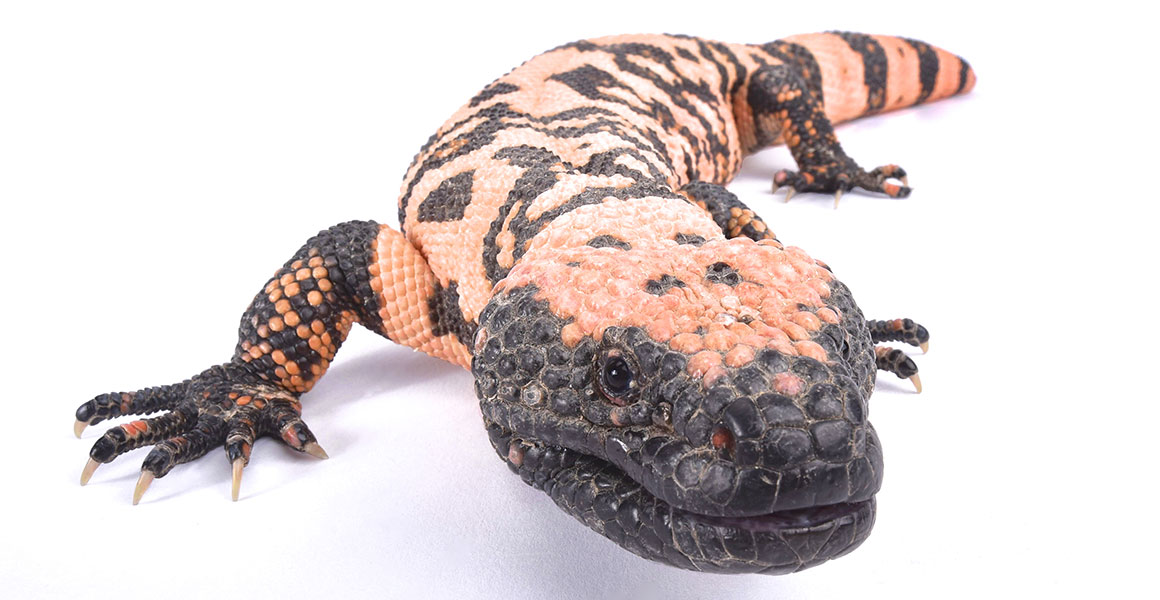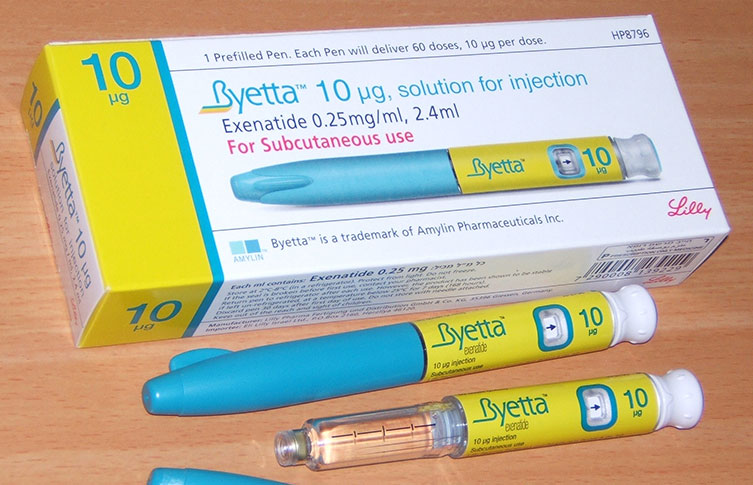The Gila monster's bite may be agonising, but humans have been using the lizard's venom to save lives.
Over 30 years ago scientists discovered the potential of Gila monster venom as a treatment for type 2 diabetes.

Venom of the Gila monster causes tremendous pain in humans - but the lizard has also been saving lives since 2005 © reptiles4all/ Shutterstock
The Gila monster's bite may be agonising, but humans have been using the lizard's venom to save lives.
Over 30 years ago scientists discovered the potential of Gila monster venom as a treatment for type 2 diabetes.
The desert-dwelling Gila monster (Heloderma suspectum) is the United States' largest and only native venomous lizard. Easily recognisable from its spotted orange-and-black skin, its bright armour offers a colourful warning to would-be predators.
In humans, the lizard's venomous bite causes extreme pain, a burning sensation and discomfort that can last for hours.
Intrigued by its ability to cause such pain, scientists began to study the Gila monster's saliva.
Dr Ronald Jenner, venom evolution expert at the Museum, sheds light on what it takes to create a cure with venom.
'Venom is almost always a cocktail of dozens to hundreds, sometimes thousands, of components,' explains Ronald.
'The toxins have evolved to do bad stuff, so harnessing an entire venom cocktail for good would be difficult. To find something useful you take out one toxin at a time and test it, looking for one that does something good.

The Gila monster's ability to cause intense pain with its bite encouraged scientists to find out how its venom works © H.G Emery and K.G Brewster (The New Century Dictionary)/ Wikimedia Commons
'Then it's just a matter of scientists looking in the right place.
'If you find a compound in venom that changes how cells metabolise sugar, it's a promising thing.
'You have to home in on that element. It is about getting rid of the complexity of the venom, and trying to home in on that very specific thing that does what you want.'
A breakthrough discovery found that a hormone in the lizard's saliva, exendin-4, could be used to treat type 2 diabetes.
Exendin-4 is in many ways similar to the human hormone GLP-1, which increases insulin production in the pancreas. The lack of naturally occurring GLP-1 in humans is one of the causes of type 2 diabetes.
Because exendin-4 and GLP-1 are similar, it became possible to treat the disease using venom.
According to figures from the World Health Organisation, in 2014 an estimated 422 million adults live with diabetes worldwide. As of 2015, 3.8 million people in England alone are thought to be living with the disease, according to Public Health England.

The similarity between a hormone in the Gila monster's saliva and the human hormone GLP-1 makes the lizard's venom suitable as the basis for diabetes medication © Milan Zygmunt/ Shutterstock
Diabetes is a chronic disease caused by the pancreas not producing enough insulin or not being able to effectively use the insulin it produces.
Type 2 diabetes is now one of the most common health conditions worldwide, and it continues to grow. The disease can lead to numerous complications including damage to the heart and blood vessels, kidney disease, eye disease, nerve damage and premature death.
The discovery of the hormone exendin-4 in Gila monster saliva led to the development of a new drug called exenatide, which has the ability to help those with type 2 diabetes.
The drug is a synthetic version of the venom's hormone, developed by scientists to mimic the effects of GLP-1, which boosts the body's ability to release its own insulin.
Although venom components may have potential practical applications, the time between discovery and a drug being approved for human use can be over 20 years.
'Lots of people invest a lot of money, time and effort into looking at venomous species looking for something of value,' says Ronald.
'If you find something, it will take many years and lots of money to get something that is approved as a drug to use on humans.'

Exenatide is a synthetic version of exendin-4, sold under the commercial names Byetta and Bydureon © MPDY/ Wikimedia Commons
Exenatide (commercial name Byetta), the synthetic version of exendin-4, was developed in 1992 but was not approved for use until 2005. It was the first hormone-mimicking drug to be approved to treat type 2 diabetes. It is still used today.
Using venom as medication is not a recent innovation. 'The first venom-based medicine is from the 1970s, but using venom goes back millennia,' says Ronald.
'People in ancient India, for example, were always exposed to snake venoms, and snake venoms do biological stuff.
'So there has always been an interest to not just neutralise the effects of it but also use venom to cure other things.'
But scientists are increasingly looking to venoms as a source for innovative medicines.
Hi1a, a protein in the deadly venom of Australia's funnel-web spider, has recently been found to have the ability to protect the brain from damage caused by strokes.

The venom of the Australian funnel-web spider can kill a human in as little as 15 minutes. But this deadly animal may hold the answer to preventing brain damage in stroke victims. © James van den Broek/ Shutterstock
According to the Stroke Association, around 152,000 strokes occur every year in the UK. Strokes are one of the main causes of adult disability. When the attack occurs, the blood supply to part of the brain is reduced or cut off, resulting in rapid and extensive cell death.
The spider's venom protein has been found to protect the striatal region of the brain. Although damage to this core is usually irreversible, with protection from Hi1a, permanent brain damage could be preventable.
Another example is that of the cone snail, whose venom has yielded a chronic painkiller.
Ronald says, 'There are hundreds of components in the venom, giving you hundreds of side effects, many of them unpleasant. But you home in on one thing and see if it does the trick.
'The pain medicine is the exact same thing the snail uses. In fish it paralyses, or helps to paralyse. But in humans it can be used to suppress our pain pathway. '

Just how weird can the natural world be?
Don't miss a thing
Receive email updates about our news, science, exhibitions, events, products, services and fundraising activities. We may occasionally include third-party content from our corporate partners and other museums. We will not share your personal details with these third parties. You must be over the age of 13. Privacy notice.
Follow us on social media